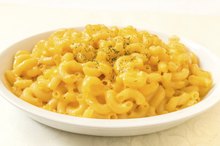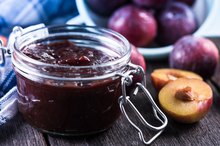Sodium alginate is a flavorless gum made from brown kelp grown in the cold water regions of Ireland, Scotland, North and South America, Australia, New Zealand and South Africa 1. It's used in the food industry to increase viscosity and as an emulsifier. It works as a gelling agent, stabilizer and thickener, and can also be used to make foams.
Dairy Based Drinks and Yogurt
Sodium alginate is often found in chocolate milk, eggnog, drinkable yogurt and fruit-flavored yogurts to make a smoother mixture, as a clarifying agent and as a stabilizer 1.
Ice Cream and Popsicles
What Is Sodium Carboxymethyl?
Learn More
Sodium alginate is used in ice cream to assure a creamy texture and prevent ice crystals from forming 1. In fruit flavored popsicles, sodium alginate helps distribute fruit uniformly during the freezing process and stops them from dripping while eating 1.
Sauces, Gravies and Dressings
Sodium alginate is used to stabilize liquid packaged salad dressings, sauces and gravies to extend their shelf life and prevent separation 1.
Pudding, Pie and Pastry Fillings
Kraft Easy Mac Nutrition Information
Learn More
Puddings, pie and pastry fillings and mousses utilize the gel-forming and non-melting properties of sodium alginate 1.
Molecular Gastronomy
There is an innovative new food movement that explores traditional ingredients used in non-traditional ways. Led by Ferran Adrià of El Bulli’s Restaurant in Spain and Wylie Dufresne of WD-50 Restaurant in New York, sodium alginate is often mixed with calcium chloride to form a gelatin, which is paired with unexpected flavors to create a variety of "food caviars." Molecular Gastronomy is taking food science to a whole new level 1.
Related Articles
Writer Bio
Maura Shenker is a certified holistic nutritionist and health counselor who started her writing career in 2010. She leads group workshops, counsels individual clients and blogs about diet and lifestyle choices. She holds a Bachelor of Fine Arts from the Rhode Island School of Design, a Master of Fine Arts from The Ohio State University and is a graduate of the Institute for Integrative Nutrition.









